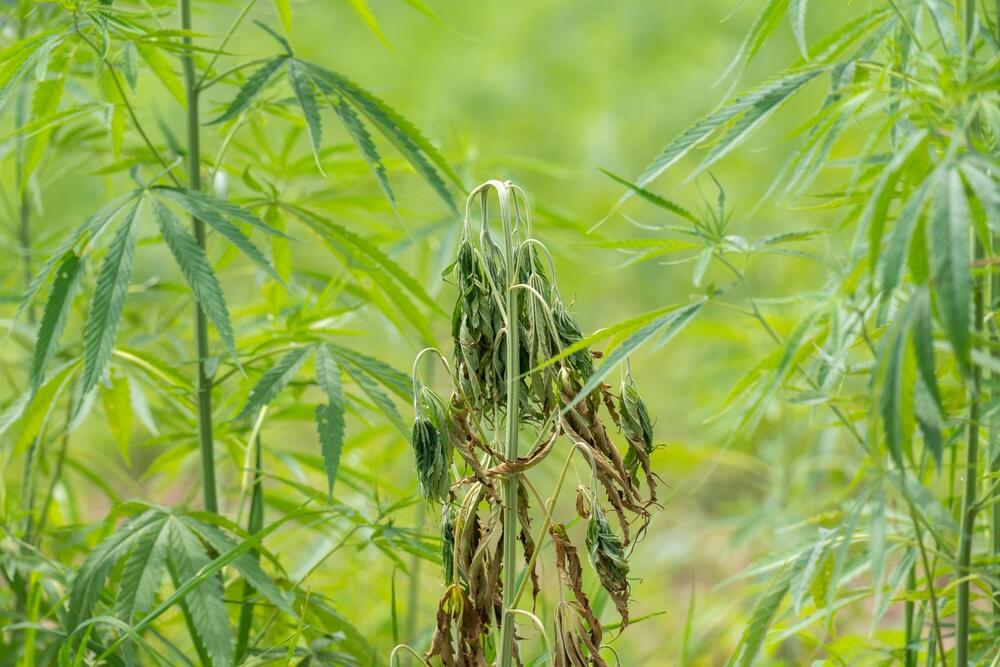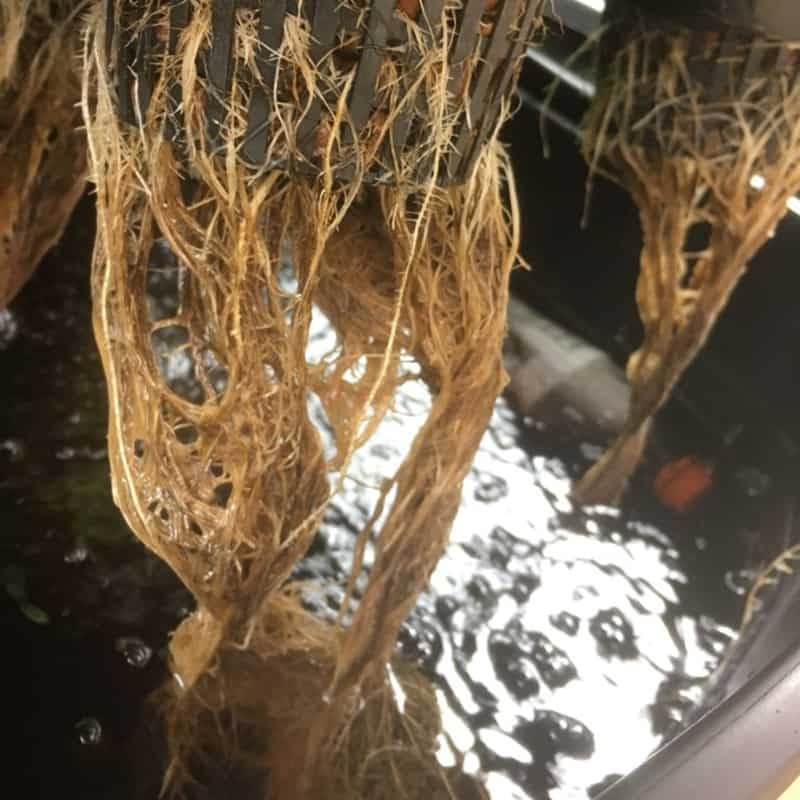The Best Fluffy Pancakes recipe you will fall in love with. Full of tips and tricks to help you make the best pancakes.

How to Identify and Treat Fusarium on Cannabis?
Growing cannabis is a rewarding experience, but nothing’s more frustrating than watching your plants wither due to an unseen enemy like Fusarium. This sneaky fungi can creep in and take hold before you even know it, and by then, it’s often too late. But don’t worry, I’ve got your back! Let’s break down what Fusarium is, how to spot it, and most importantly, how to prevent and treat it so you can keep those plants thriving.
What is Fusarium?
Overview of Fusarium Fungi
Fusarium is a type of fungus that’s infamous for wreaking havoc on cannabis plants. It’s part of a group of filamentous fungi that can cause significant plant diseases, including root rot, stem rot, and vascular wilting. What makes it so challenging is that it can live in your soil for years, waiting for the right conditions to attack. So, you’ve got to be on guard all the time!
Common Fusarium Species Affecting Cannabis
The most common troublemaker for marijuana is Fusarium oxysporum, which is responsible for vascular wilt. Another species, Fusarium solani, targets the roots, causing root rot. Both are bad news for your plants, but each comes with its own set of symptoms that we’ll get into below.
Fusarium’s Impact on Cannabis Plants
When Fusarium strikes, it’s like your weed is slowly suffocating. The fungi clog up the plant’s vascular system, especially the xylem, cutting off water and nutrients. You’ll see leaves wilt, growth stunt, and eventually, the plant may die if left untreated. It’s especially brutal because, once inside, Fusarium spreads rapidly through your crop, so early detection is key.
Symptoms of Fusarium in Cannabis

Early Signs: Wilt and Discoloration
One of the first symptoms is wilting, even though the plant seems to have enough water. The leaves might look droopy and pale, and some branches may start to dry out. This is because Fusarium blocks the plant’s ability to transport water properly, making it look thirsty even when it’s not.
Advanced Signs: Root Rot and Stem Cancer

As the disease progresses, the plant’s roots or stems may rot. With Fusarium solani, the roots turn brown and mushy. For Fusarium oxysporum, you might notice “stem cancer”—dark, soft spots on the stem that ooze a brown, viscous liquid. At this stage, the plant’s chances of survival are slim.
Visual Clues in Roots, Stems, and Leaves
If you dig a little deeper (not literally!), you’ll notice the inside of the stems or roots will be discolored, often turning a reddish-brown. Cut open a stem, and you’ll see that the veins are blocked and dying, which is a dead giveaway that Fusarium has taken over.
How Does Fusarium Spread?
Environmental Factors (Humidity, Temperature)
Fusarium loves warm, humid environments—basically the conditions you’re trying to create for your sativa plants! It thrives in temperatures between 20-25°C (68-77°F), and if the humidity is too high, it’s like an open invitation for the fungus. So keep that humidity in check!
Contaminated Soil and Water
This fungi can hang out in soil for years without a host plant. It spreads through soil, water, and plant debris. If you’re reusing soil or water that’s been contaminated, Fusarium is likely to hitch a ride into your new grow. Always start with clean, sterile soil.
Spread Through Plant Debris and Tools
Got dirty gardening tools? Yeah, those can spread Fusarium too. If you’ve been working with infected plants and don’t sanitize your tools, you could be spreading the fungus to your entire crop without even realizing it. So, disinfect everything—gloves, scissors, pots, the works!
How to Prevent Fusarium in Cannabis
Start with Clean, Sterile Soil and Seeds
You’ve heard it a million times, but prevention is better than cure. Begin with healthy, disease-free seeds and sterile soil. Avoid reusing soil unless it’s been properly sterilized, and buy seeds from reputable sources to minimize the risk of contamination from the start.
Control Humidity and Temperature Levels
Keep humidity between 40-60% and avoid temperatures above 25°C. This helps keep the environment less inviting for Fusarium. If you’re growing indoors, invest in a good hygrometer and dehumidifier. Outdoors, try to avoid growing in areas with excessive moisture or poor airflow.
Watering Techniques to Prevent Moisture Build-Up
Overwatering is like throwing a party for Fusarium. Always let the top inch of soil dry out before watering again. Make sure your pots have good drainage to avoid water pooling at the bottom, which is a prime breeding ground for fungi.
Use of Natural and Chemical Preventive Methods
You can use natural fungicides like horsetail or neem oil to keep Fusarium at bay. Trichoderma and mycorrhizal fungi are also great natural defenses since they help boost your plant’s immune system. Some growers even alternate watering with oxygenated water to keep the roots healthy and oxygenated.
Maintaining Proper Ventilation and Airflow
Proper airflow is crucial, especially indoors. Good ventilation helps keep humidity in check and prevents stagnant air, which can lead to fungal growth. If you’re in a greenhouse or grow tent, keep the air moving with fans, and make sure there’s plenty of space between your plants.
How to Treat Fusarium Once Identified
Remove Infected Plants Immediately
Once Fusarium has taken hold, you’ve got to act fast. The first step is to remove any infected plants and destroy them. Don’t compost them—burn them if you can, or dispose of them far away from your grow site. This helps stop the spread to your healthy plants.
Use of Fungicides and Beneficial Microbes
There’s no guaranteed cure for Fusarium, but you can try fungicides specifically designed for cannabis. Beneficial microbes like Trichoderma can also compete with Fusarium in the soil, helping to slow its spread. These biological controls work best as a preventive measure but can help slow things down if the infection isn’t too advanced.
Soil Solarization and Biological Controls
For outdoor growers, soil solarization is a nifty trick. You cover the soil with clear plastic for a few weeks during hot weather. The sun heats up the soil, killing off many pathogens, including Fusarium spores. You can also rotate crops to reduce the fungus’s chances of coming back.
Tips for Improving Growing Conditions to Limit Spread
If you notice any signs of Fusarium, improve your growing conditions immediately. Lower humidity, increase airflow, and make sure your plants are spaced out. This will make it harder for the fungus to spread.
Can Fusarium Be Completely Eliminated?
The Challenges of Fusarium Eradication
Unfortunately, once Fusarium is in your soil, it’s there to stay. It can survive in the soil for years, making total eradication nearly impossible. This is why prevention and early detection are so important. It’s all about managing the environment to keep Fusarium dormant.
Long-Term Management and Prevention Strategies
The best long-term strategy is to consistently use preventive measures: clean tools, healthy seeds, proper ventilation, and the use of biological controls like Trichoderma. By creating a hostile environment for Fusarium, you can keep it at bay for the long haul.
FAQ
What does Fusarium look like on cannabis plants?
Fusarium causes wilting, yellowing leaves, and brown, mushy roots. Stems may develop soft, dark spots and ooze a brown liquid.
Can Fusarium spread to other plants in the grow room?
Yes, Fusarium spreads easily through soil, water, tools, and plant debris. Removing infected plants immediately helps limit the spread.
What are the most effective fungicides for treating Fusarium?
Specialty fungicides for cannabis and biological controls like Trichoderma are effective in slowing Fusarium’s progress, though prevention is best.
How long can Fusarium spores survive in soil?
Fusarium spores can survive in soil for up to 15 years, making prevention and crop rotation key to managing its spread.
Is it possible to prevent Fusarium with organic methods?
Yes, natural fungicides, beneficial microbes like Trichoderma, and organic soil management techniques can help prevent Fusarium infections.
Fusarium is a tough opponent, but with the right strategies, you can keep your cannabis plants safe and thriving. It’s all about prevention—keeping your grow area clean, managing humidity, and using biological controls like Trichoderma. Stay vigilant, and remember, early detection and action are your best defenses!




